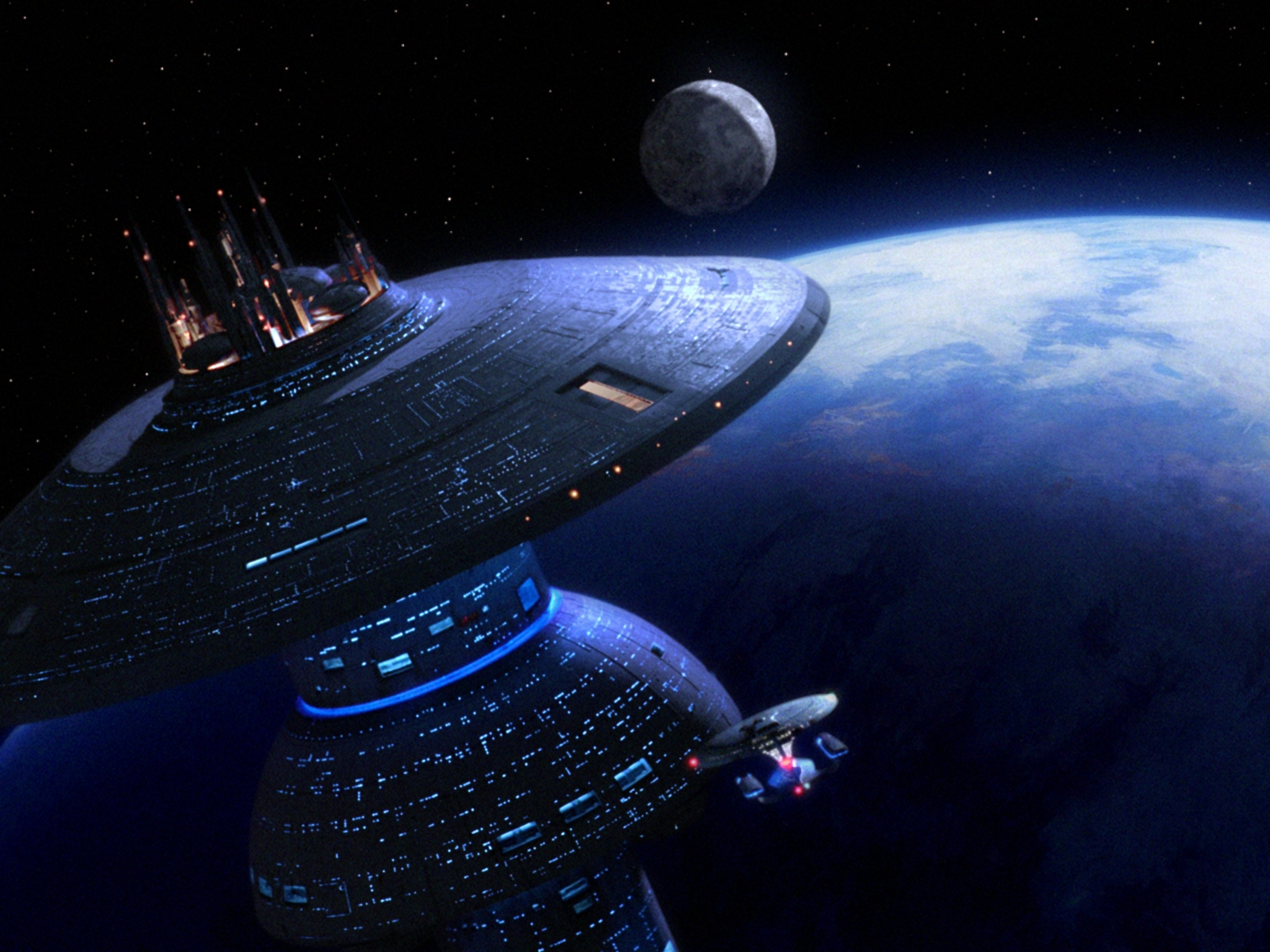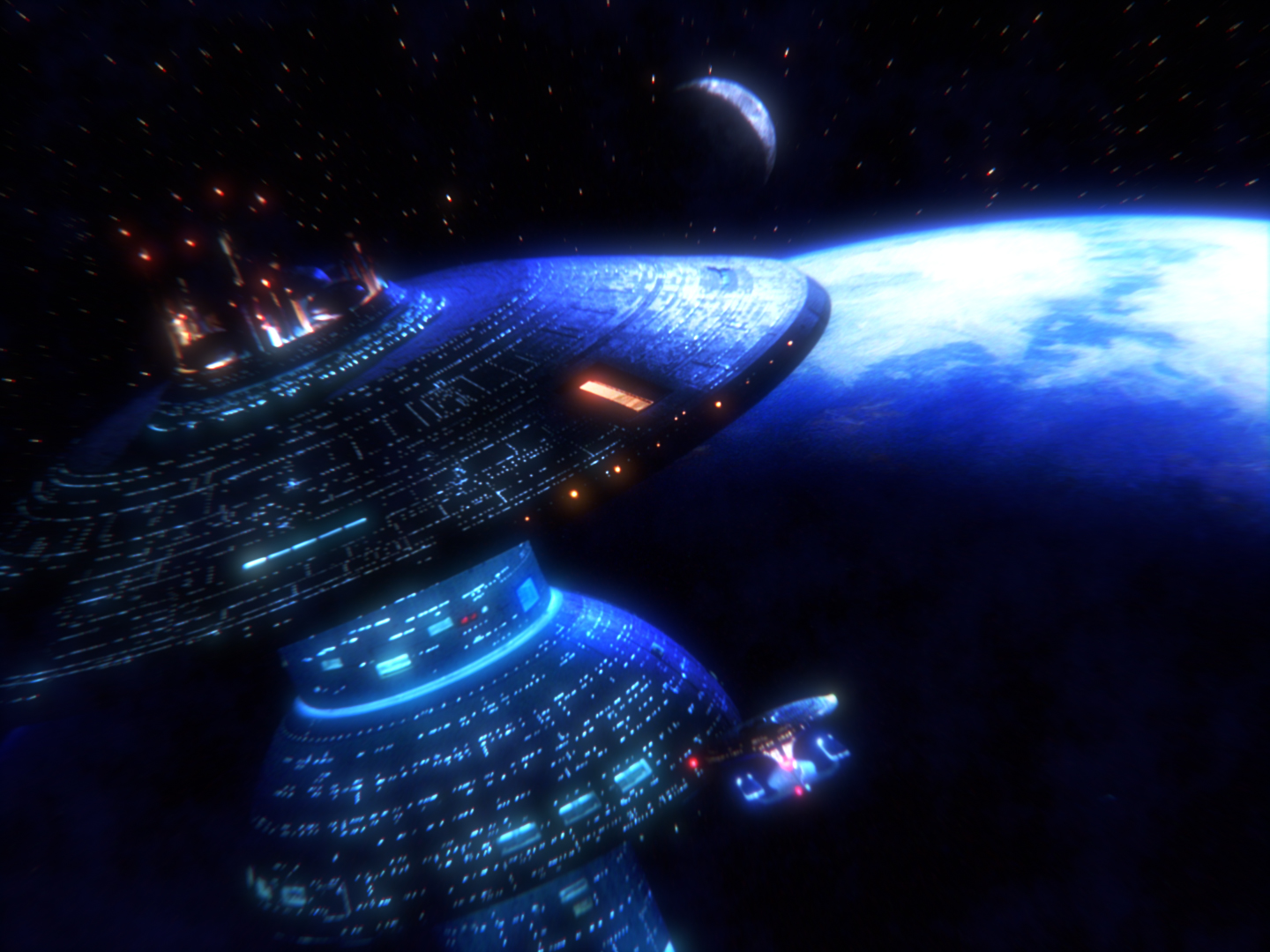Sure, "basically." On the other hand, a compositor I know referred to the TNG-R process as "redoing the effects from scratch," since it was all in his area of expertise. You don't get something that looks good just by dropping layers of photography into the right order on the computer.
The composite is where the magic happens. The filename indicates you pulled the screencap from the EAS Remaster comparison page, so the same frame as it was done in the '80s is right there for you to compare it to. Here, I'll make it easier by shrinking the recomposited version to the same size, so it's apples-to-apples and one isn't bigger than the other:

The moon and Earth have been replaced with new high-res CG elements, which I mention only for completeness since it's besides the point. For the original elements, everything's sharper. The fine detail on the model photography is visible because it was comp'd on a modern system and not on videotape. You can see the panel lines on the ship rather than a smooth shape, the windows are only subtly blooming, and there are even reflections on the cover of the impulse engine. But that's all an artistic choice. You could take the same photograph passes ILM made in the '80s and turn it into something that looks very much like Discovery, just as a different compositing strategy could eliminate virtually all the fuckery we're complaining about in DSC. Unfortunately, I don't have access to the raw render passes from Discovery,
but I do have them from a shot for TNG-R, so allow me to illustrate with a very quick and dirty example trying to composite a TNG shot, using the original elements, in the style of Discovery. (To be fair, since so much of the Discovery's look is, well, "look," I used the final TNG-R comp as a base, and used the elements to emphasize different lighting passes to more-or-less get the same effect as DSC). It was super-fun fighting literally every bit of instinct and experience I have about how space is supposed to look.
This is what the Enterprise approaching spacedock looked like in the '80s:
This is what it looked like in TNG-R:
And this, God help us all, is what it would look like if some Lucasian madman decided to try and make everything in older Trek shows match Discovery's season one look:
And, for reference, the Discovery orbiting Pahvo in reasonable-quality on-line-streaming HD:
(Yes, there is that much chromic aberration in Discovery. I really want to know why they aren't just having the VFX team try and match the live-action footage in terms of lens and lighting style. That way it'd be the DP's fault if space looked weird.)











